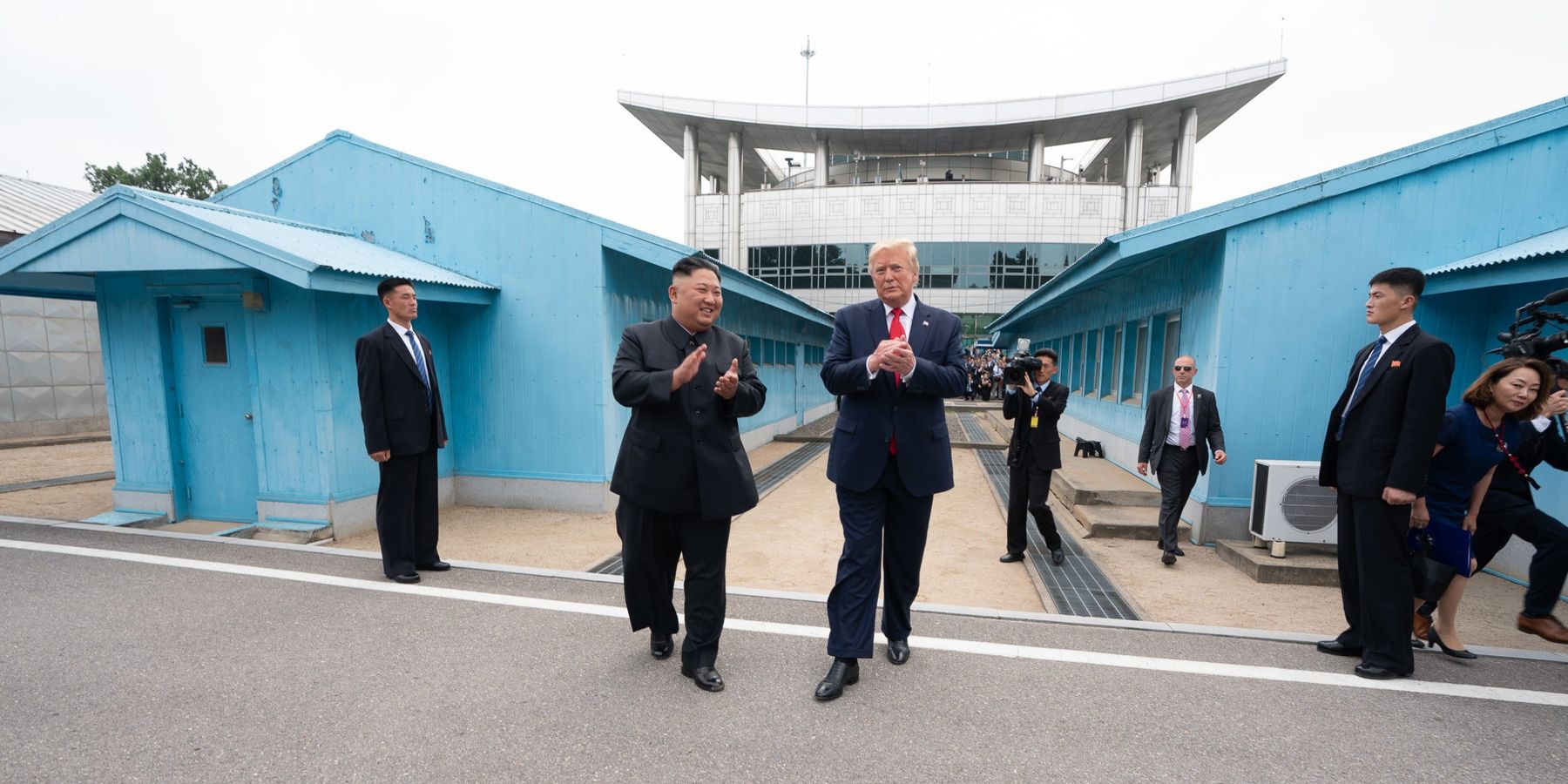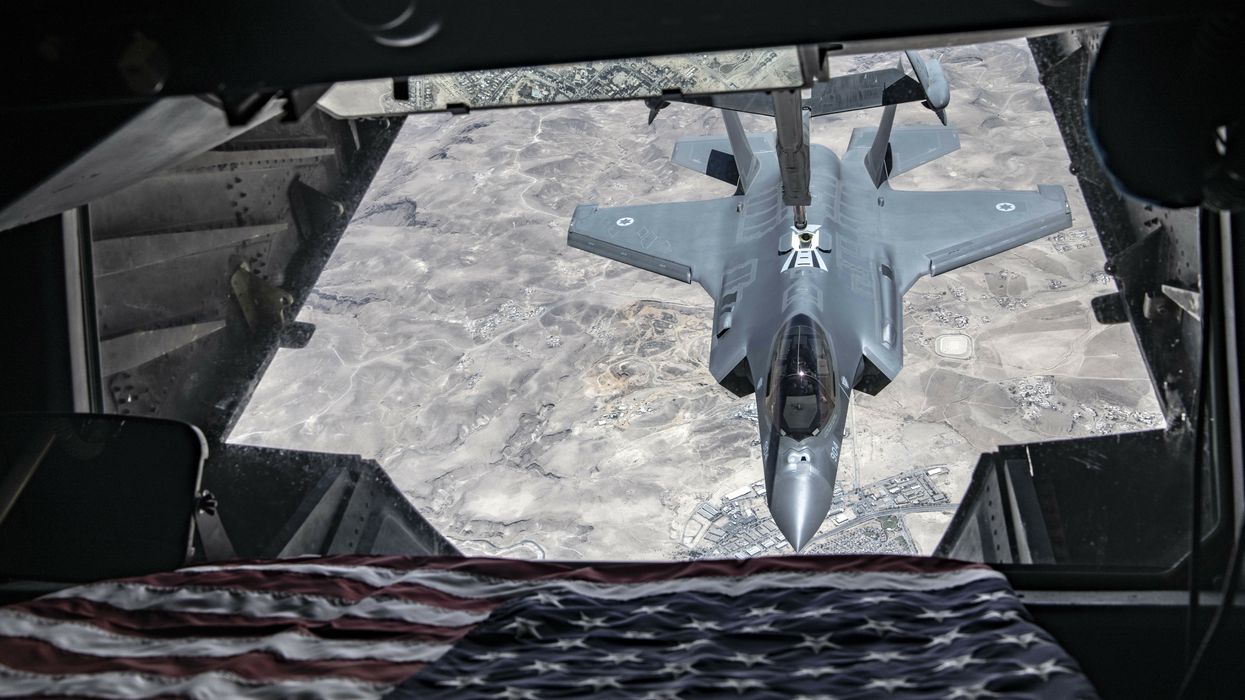Kim Jong Un’s most recent cruise missile test is the second since President Donald Trump took office in January, reminding the administration that despite conflicts in Europe and the Middle East, the U.S. and North Korea have unfinished business.
Indeed, Trump has indicated on various occasions his desire to revive dialogue and negotiations with Pyongyang. At his meeting with Japanese Prime Minister Shigeru Ishiba earlier this month, he expressed confidence in having good relations with North Korea, touting his relationship with Kim.
Trump has shown that his willingness to engage with North Korea is not all talk. He brought back many of the key officials and veteran negotiators who were heavily involved in the summit diplomacy with North Korea during his first term and placed them in even more influential positions.
Alex Wong, who was formerly at the State Department and is now the deputy national security adviser in the White House, and Allison Hooker, the appointee for State Department undersecretary for political affairs and formerly a senior Asia policy advisor in the National Security Council, led working-level negotiations for Trump’s two summits with Kim Jong Un in 2018 and 2019.
Kevin Kim, the deputy assistant secretary for East Asian affairs at State, also helped shape those negotiations during his time as the chief of staff to Stephen Biegun, former U.S. Special Representative for North Korea. Beau Harrison, the deputy chief of staff for operations in the White House, was also known to be an important planner of Trump-Kim summits.
Trump’s diplomatic intent seems serious and is indeed a welcome sign, given the perilous situation Washington, Seoul, and their regional allies face in dealing with increasing North Korean nuclear threats.
Since the collapse of the second summit in 2019, Pyongyang has test-fired more missiles than in the preceding decade while also revealing an array of new weapons. As the ever more assertive testing and muscle-flexing suggest, North Korea’s nuclear program has grown rapidly in recent years.
In the meantime, North Korea has also significantly expanded its military and strategic ties with Russia. Their burgeoning cooperative partnership has chilling implications for North Korea’s nuclear threats: Pyongyang might gain access to Moscow’s advanced missile and nuclear technology. No hard evidence that Russia has transferred any of its technology to North Korea has emerged to date, but the possibility itself has been alarming enough.
In light of the overall accelerating momentum in North Korea’s nuclear buildup and the intensified saber-rattling between North Korea and U.S.-South Korean forces on the Korean Peninsula, Washington and Seoul have lost even basic hotline communications with Pyongyang for crisis management — raising the risks of inadvertent escalation and conflict.
Unfortunately, the Biden administration failed to recognize the urgency of the situation, simply waiting for North Korea to yield to Washington’s economic and diplomatic pressure and return to dialogue. The reality is that time has not been on America’s side. The more time wasted, the more advanced Pyongyang’s nuclear program will become. The Trump administration should not make the same mistake and instead invest serious efforts into reopening talks with Pyongyang.
If Trump and his administration indeed intend to reengage with Kim, he has the unique advantage of the previous experience of direct communications and negotiations with the North Korean leader. Understanding the counterpart’s character, style, and needs is always advantageous in negotiations, and Trump no doubt gained a better sense of Kim from their private conversations.
Trump’s personal relationship with Kim and his team’s overall experience of negotiations with the North Koreans can certainly be assets as the administration prepares for future diplomacy.
Another opportunity for Trump’s diplomacy with North Korea lies in the probable return of a liberal government in South Korea in the coming months.
Trump was unlikely to get the strong South Korean support for engagement with Pyongyang that he enjoyed during his first term if South Korean president Yoon Suk-yeol, who is hawkish toward North Korea, were to remain in power. However, Yoon’s declaration of martial law and failed self-coup attempt in December resulted in his impeachment by the South Korean parliament, an action that is widely expected to be upheld by the South Korean constitutional court soon. And in the anticipated snap election that would follow, the opposition liberal party, which prefers a diplomatic approach to North Korea, will likely win.
With the return of a liberal administration in Seoul, Trump will likely have its full support for a diplomatic initiative with North Korea, as he did from former President Moon Jae-in. Policy coordination to reduce tensions with North Korea, such as toning down allied rhetoric and reducing or halting joint military exercises, would have faced resistance from Yoon but would likely be supported by his liberal successor. In coordinating concessions for negotiations, Yoon’s liberal successor will also likely be more open to easing sanctions and pursuing a peace treaty with North Korea.
Trump’s ongoing efforts to end the war in Ukraine and improve relations with Russia could also augur well for diplomacy with North Korea. Kim’s relationship with Beijing, its main external source of economic support, has recently been rocky, and any detente between Moscow and Washington could put Kim at greater risk of isolation.
In such a scenario, the Trump administration may be able to more effectively leverage Moscow, which presumably prioritizes a deal to end the Ukraine war on favorable terms over its relationship with Pyongyang.
Overall, Trump’s personal enthusiasm for diplomacy with North Korea, his experienced team of policy professionals and negotiators at both senior and working levels, the likely return of a diplomacy-friendly government in Seoul, and potential improvements in U.S.-Russia relations could impart new momentum for reengagement.
Nonetheless, there remains one major obstacle to such a scenario: Washington’s maximalist demand for North Korea’s complete denuclearization.
Seeking the same goal that led every U.S. president, including Trump himself, to failed negotiations with North Korea would be unwise. Kim has reiterated that he will never abandon nuclear weapons and he very likely truly means it; nuclear weapons are the only reliable security guarantee for his regime. Kim now likely possesses far more nuclear weapons than the last time Trump met him in 2019. Accordingly, the price he may charge for a new round of negotiations may be higher. If Trump insists on playing the denuclearization card from the start, failure is virtually certain.
Instead, Trump and his administration should accept the reality of North Korea’s nuclear status and adopt more realistic goals. A growing number of experts have proposed an arms control-centric deal aimed, initially at least, at capping Pyongyang’s nuclear program and restricting selective particularly dangerous capabilities, such as tactical nuclear weapons.
The Trump administration should explore this approach. While arms control is not ideal compared to complete denuclearization, its chances of succeeding are greater than starting with the demand for complete denuclearization. Convincing South Koreans to accept Pyongyang’s nuclear status will not be easy, but it may be more acceptable to a liberal South Korean administration which might understand that there is no other viable option for peaceful coexistence with the North.
President Trump has promised that his “proudest legacy will be that of a peacemaker” and might have a real shot at promoting peace on the Korean Peninsula this time. But that breakthrough may only come with an audacious departure from the decades-long, exhausted conventional wisdom of maximum pressure and complete denuclearization of North Korea.- Americans far less hawkish on North Korea and China than policy elites: poll ›
- How we can build on Trump's North Korea policy ›
- Kim Jong Un is nuking up and playing hard to get | Responsible Statecraft ›
- Reality check: North Korea won’t give up its nukes | Responsible Statecraft ›
















